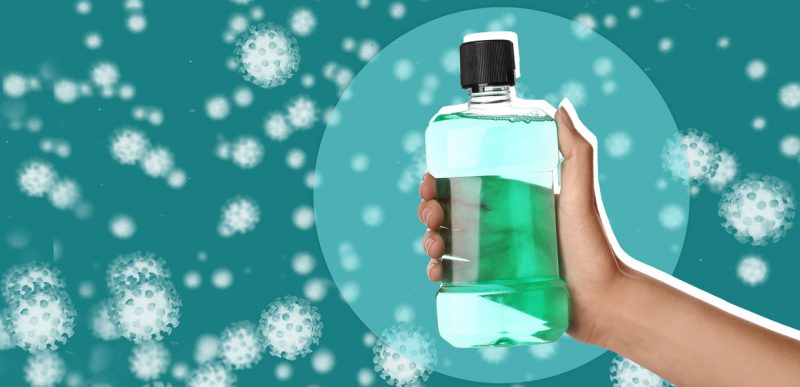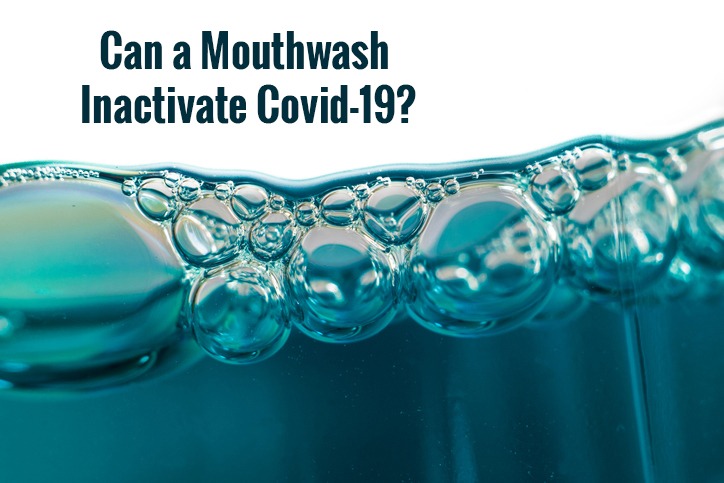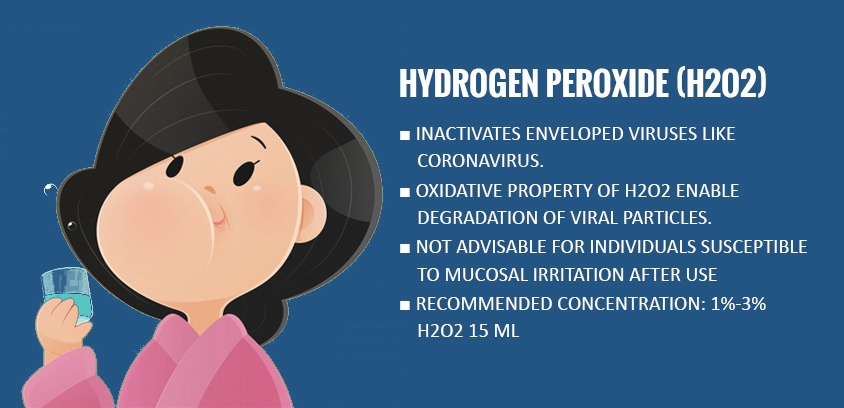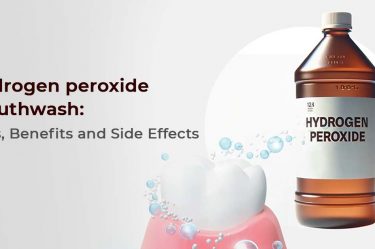Use of Mouthwashes Against COVID-19

When it is all about minimization, every bit helps. During these pandemic times, it is no news that dental clinic can prove to be a harbour of infection if tons of measures are not incorporated. After nasal passage, oral cavity is the second most probable route for transmission of Covid-19. It becomes the first sight for incubation of the virus whereafter it travels further into the body. The proximity to the patient during dental procedure, high generation of aerosols during treatment process, and the identification of SARS-CoV-2 present in saliva have proved the oral cavity as a distinctly potential reservoir for transmission of the disease.

Alongside several other protocols followed before, during and after dental treatment, eradicating the possibility of a probable viral load becomes crucial. Using mouthwashes is a common practice due to its ability to reduce the number of various microorganisms in the oral cavity. There is no proven clinical evidence or study which infers that mouthwashes could prevent the transmission but usage of preoperative antimicrobial mouthwashes is a strong recommendation to inhibit colonization and diminish the number of microorganisms in the oral cavity. With the depletion in number of microorganisms, chances of diffusion of the virus due to aerosols generation gets greatly reduced. Most widely suggested mouth rinses for alleviating the risk of scattering should contain chlorhexidine gluconate (CHX), cetylpyridinium chloride (CPC), povidone-iodine (PVP-I), and hydrogen peroxide (H2O2).

The American Dental Association (ADA) and the Center for Disease Control and Prevention (CDC) have recommended the use of preprocedural mouthwashes before oral procedures pertaining to a high viral load detected in saliva and other oral fluids. It is to be noticed that regular oral hygiene might miss out on interdental areas and periodontal pockets which can be attended with the help of these mouthwashes.
Chlorhexidine (CHX)
A few medical journals published studies in 2020 which concluded that Chlorhexidine mouthwash is effective in reducing the Covid-19 viral load for two hours. It was found that 10-15 ml of 0.12% CHX suppresses the virus for a short time period. This makes the use of Chlorhexidine beneficial in the outpatient department and during the diagnostic phase. Suspected individuals, patients, doctors, healthcare workers could all use this mouthwash every 2 hours to minimize the risk of spread of infection. Use of Chlorhexidine mouthwash is useful but limited as it decreases the viral load only for a couple of hours. Furthermore, Chlorhexidine causes brown stains on tooth surfaces and is therefore not usually prescribed for more than 2-3 weeks.

Hydrogen peroxide (H2O2)
Hydrogen Peroxide, when used in low concentrations, is a commonly used mouthwash in a dental clinic for almost a century now. Its use has been increased remarkably in the presence of corona virus around us. Certain systematic reviews report that enveloped viruses like corona virus are inactivated by 0.5% Hydrogen Peroxide. It is believed that hydrogen peroxide contributes largely in reduction of bacteria and its oxidation properties enable degradation of viral particles in the oral cavity. Clinicians and clinical staff in a dental premise are themselves using 0.5% – 1% Hydrogen Peroxide as a prophylactic measure and also prescribing the same to their patients to inactivate Covid-19, reduce the salivary viral load and control its spread in the best possible way along with other protocols.

Cetylpyridinium Chloride (CPC)
Cetypyridinium Chloride is a broad-spectrum biocide whose primary function is to disrupt the lipid layer of the virus membrane. It has been used as an alternative option for patients who develop stains and inflammation to gums after using Chlorhexidine. It is believed to lessen the risk of spread of viral infection during dental processes when used in 0.05% concentration, however, hypothesis on a potential reduction in the viral load caused by Covid-19 requires more clinical studies and research to support and validate the possibility.

Iodopovidone (PVP-I)
Povidone-iodine (PVP-I) is a water-soluble iodine complex that has been widely used as a pre-surgical skin antiseptic and as a mouthwash. Research studies reveal that PVP-I is highly virucidal and thus efficient in rapid inactivation of Covid-19 at a very low concentration and withing a short duration of time. The study states that, “Povidone-iodine nasal antiseptic solutions at concentrations as low as 0.5% rapidly inactivate SARS-CoV-2 at contact times as short as 15 seconds. Intranasal use of PVP-I has demonstrated safety at concentrations of 1.25% and below and may play an adjunctive role in mitigating viral transmission beyond personal protective equipment.”

The overly used saying continues to have good weightage when it is said that, ‘Prevention is better than cure’. Hence, although more validated clinical studies and evaluation are still awaited, it is advisable to incorporate usage and recommendation of mouthwashes for prophylactic and preprocedural use in dental practice to turn down the probable viral load and hereby reducing the risk of cross-contamination during dental procedures.

References:
- Omidbakhsh N, Sattar S A. Broad-spectrum microbicidal activity, toxicologic assessment, and materials compatibility of a new generation of accelerated hydrogen peroxide-based environmental surface disinfectant. Am J Infect Control 2006; 34: 251-257.
- Frank S, Brown SM, Capriotti JA, Westover JB, Pelletier JS, Tessema B. In vitro efficacy of a povidone-iodine nasal antiseptic for rapid inactivation of SARS-CoV-2. JAMA Otolaryngol Head Neck Surg. 2020;146(11):1-5.


No Comment